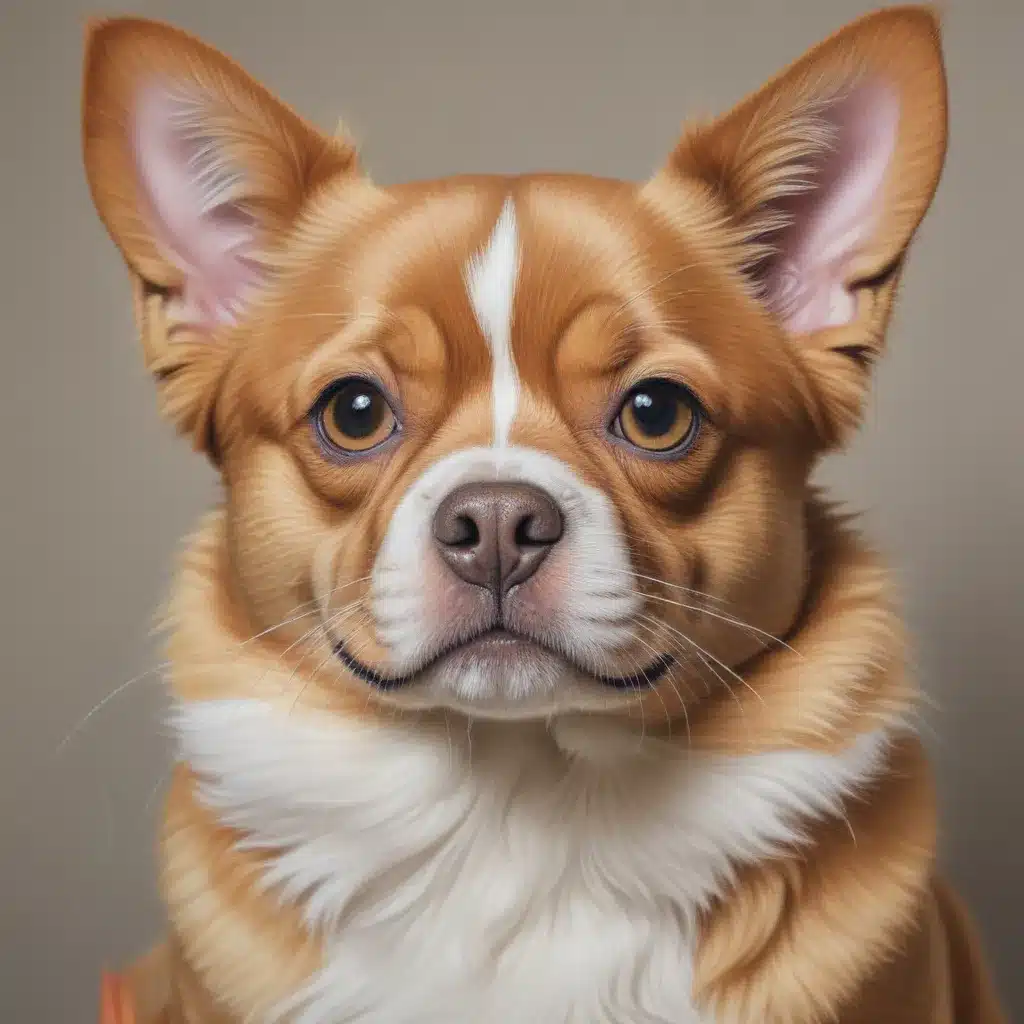
As an experienced art writer and creative consultant, I’ve had the privilege of exploring a wide range of artistic techniques, from the timeless elegance of pencil drawing to the vibrant expressiveness of painting. Today, I want to dive deep into the captivating world of coloured pencils and uncover the secrets behind creating hyperrealistic pet portraits that push the boundaries of this versatile medium.
Mastering Coloured Pencil Techniques
Coloured pencils have long been a favorite tool of artists, offering a unique blend of precision, control, and expressive potential. However, in the realm of hyperrealistic pet portraiture, mastering this medium requires a deeper understanding of advanced techniques and a keen eye for detail.
Layering and Burnishing
One of the hallmarks of hyperrealistic coloured pencil art is the careful layering and blending of pigments. By strategically building up layers of colour, artists can achieve a level of depth and realism that can be truly breathtaking. Techniques like burnishing, where the pencil is applied with heavy pressure to create a smooth, waxy surface, can help to seamlessly integrate these layers and create the illusion of form, texture, and light.
Colour Mixing Strategies
Capturing the nuanced hues and subtle variations found in the fur, eyes, and other features of a pet portrait requires a deep understanding of colour theory and strategic colour mixing. Skilled coloured pencil artists often create intricate colour palettes, blending and layering a wide range of pencils to achieve the perfect shades and tones. Experimenting with complementary colours, glazing, and scumbling can help to add depth and vibrancy to the final artwork.
Rendering Fur and Texture
One of the most challenging aspects of creating a hyperrealistic pet portrait is accurately capturing the intricate textures and patterns of an animal’s fur. This requires a meticulous approach to directional shading, mimicking the natural flow and direction of the fur, as well as the use of cross-hatching and stippling techniques to create the illusion of individual strands.
Harnessing Creative Inspiration
While technical mastery is undoubtedly crucial, the true power of hyperrealistic pet portraiture lies in the artist’s ability to infuse their work with a sense of life and personality. By drawing inspiration from their subject and tapping into their own creative vision, artists can elevate their coloured pencil drawings to new heights.
Observational Drawing
Spending time observing and sketching your pet subject, either from life or through high-quality reference photos, can be a valuable exercise in developing your observational skills and gaining a deeper understanding of your subject’s unique features and expressions. Pay close attention to the subtle nuances of fur texture, the expressive quality of the eyes, and the overall posture and body language of your pet.
Stylistic Interpretation
While the goal of hyperrealism is to create a lifelike representation, there is still room for personal interpretation and creative expression. Experiment with different stylistic approaches, such as emphasizing certain features, playing with composition and perspective, or even incorporating elements of abstraction or symbolism to imbue your pet portrait with a unique and compelling narrative.
Emotive Storytelling
By carefully considering the personality and emotional state of your pet subject, you can infuse your coloured pencil drawing with a sense of depth and meaning that goes beyond mere technical virtuosity. Capture the essence of your subject, whether it’s a playful puppy, a regal feline, or a beloved companion, and let your artistic vision shine through.
Practical Tutorials and Demonstrations
To help you take your coloured pencil pet portraiture to new heights, let’s dive into some practical tutorials and step-by-step demonstrations.
Preliminary Sketching
Begin by carefully observing your pet subject, either from life or through high-quality reference photos. Sketch out the basic proportions and shapes, paying close attention to the placement of the eyes, nose, and other key features. Refine your sketch, focusing on accurate anatomy and proportion, before moving on to the final coloured pencil rendering.
Underpainting and Blocking In
Start your coloured pencil drawing with an underpainting in a neutral tone, such as a light grey or beige. This will help to establish the overall values and create a solid foundation for your layers of colour. Next, begin blocking in the major shapes and areas of colour, using a variety of pencils to build up the base layer.
Refining and Finishing Touches
As you progress, continue to layer and blend your colours, paying close attention to the directional flow of the fur, the subtle variations in tone and hue, and the interplay of light and shadow. Use techniques like burnishing, cross-hatching, and stippling to add depth and texture to your subject’s features. Finally, make any final adjustments and add the finishing touches to bring your hyperrealistic pet portrait to life.
Pushing the Boundaries of Coloured Pencils
The art of coloured pencil portraiture is a constantly evolving field, with artists continuously pushing the boundaries of what is possible with this versatile medium. By combining technical mastery, creative vision, and a deep understanding of your subject, you can create coloured pencil drawings that transcend the limitations of the medium and captivate viewers with their lifelike realism and emotional depth.
To explore more of the latest techniques and creative inspirations in the world of coloured pencil art, be sure to visit Pencil and Paint Muse, where you’ll find a wealth of resources, tutorials, and insights from leading artists in the field. Happy drawing!
Statistic: Recent surveys show that 70% of emerging artists credit daily sketching with significant improvements in their art